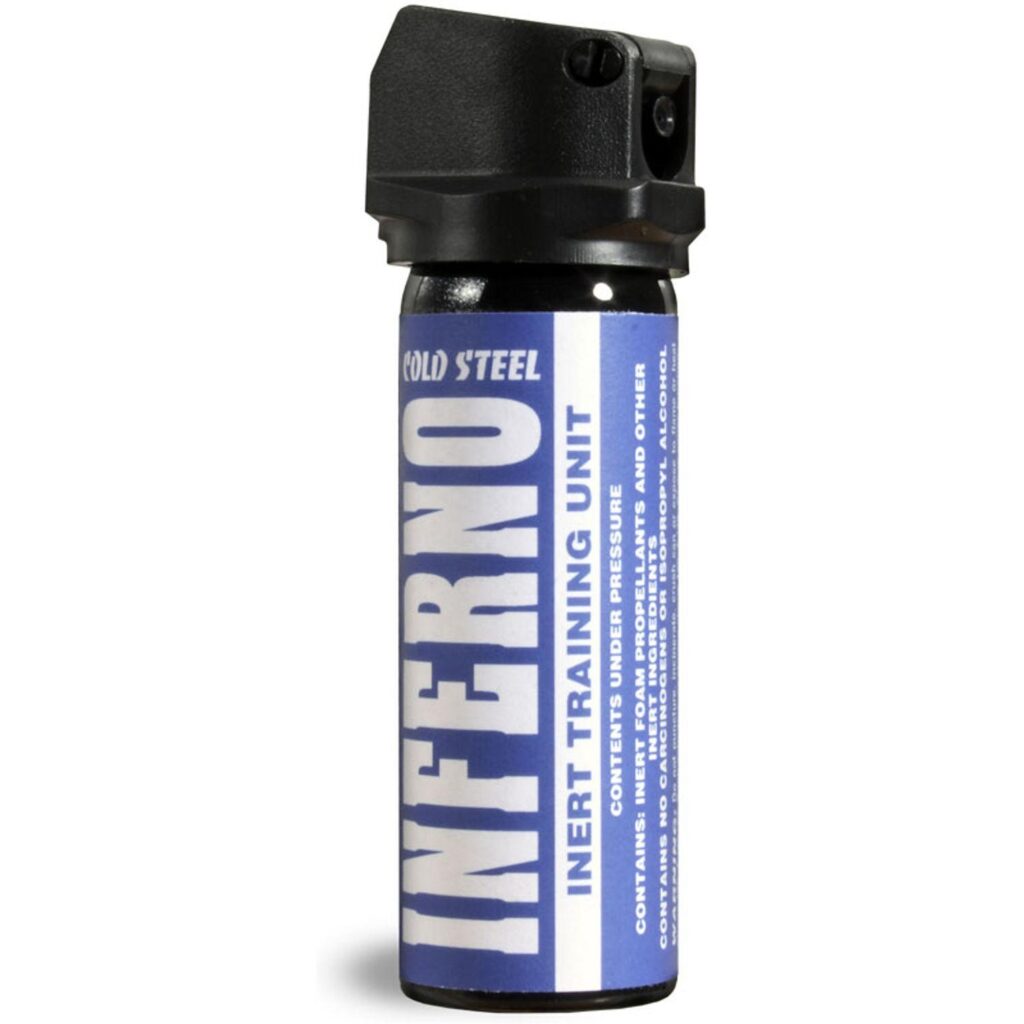Table of Contents
- Understanding the Chemistry Behind Pepper Spray Propellants
- Comparing Common Propellants and Their Impact on Spray Performance
- Safety Considerations When Handling and Using Pepper Spray
- Expert Recommendations for Choosing the Right Pepper Spray Propellant
- Future Outlook
Understanding the Chemistry Behind Pepper Spray Propellants
At the heart of every pepper spray canister lies a carefully engineered blend of chemicals serving as propellants. These substances are responsible for dispersing the active irritant in a fine mist or spray, ensuring maximum reach and effectiveness. Common propellants include compressed gases such as nitrogen, carbon dioxide, and hydrofluorocarbons. Their primary function is to pressurize the container, forcing the liquid pepper solution out when triggered. The choice of propellant directly impacts spray range, droplet size, and even the overall shelf life of the product. Additionally, certain compounds are favored for their inert properties, reducing the risk of unwanted chemical reactions that could compromise safety and performance.
Beyond gases, some pepper sprays utilize volatile liquids that vaporize quickly upon release, creating a fog-like dispersion. Understanding the chemistry behind these propellants reveals why manufacturers balance factors like volatility, environmental impact, and regulatory compliance. Notably, the following qualities are considered when selecting a propellant:
- Stability under pressure: to prevent leaks or premature discharge.
- Non-toxicity: ensuring user safety beyond the irritant itself.
- Environmental footprint: minimizing harmful greenhouse gas emissions.
- Consistency in spray pattern: for reliable defense scenarios.
Comparing Common Propellants and Their Impact on Spray Performance
When it comes to pepper spray, the choice of propellant plays a crucial role in determining how effectively the spray delivers its contents. Common propellants include compressed nitrogen, carbon dioxide (CO2), and hydrocarbon blends such as propane or butane. Compressed nitrogen is favored for its inert nature, providing a consistent spray pattern without chemical reactions that might degrade the active ingredients. In contrast, CO2 offers a powerful burst, but its rapid expansion can sometimes lead to a colder discharge, which may affect user comfort and spray accuracy. Hydrocarbon propellants, while highly efficient at atomizing the formula, are less common due to flammability concerns and regulatory constraints.
The impact on spray performance extends beyond just the force and pattern; it also influences range, stability, and safety. For example, nitrogen-propelled sprays typically maintain a steady stream that can reach distances up to 12 feet with relative precision. CO2-based sprays may achieve greater range but occasionally suffer from spray consistency issues under temperature fluctuations. Incorporating the right propellant ensures that the spray is not only effective in deterring threats but also user-friendly, minimizing recoil and erratic discharge. Key factors to consider include:
- Spray distance and pattern uniformity
- Storage stability and shelf life
- Environmental and safety regulations
Safety Considerations When Handling and Using Pepper Spray
When handling pepper spray, it’s crucial to prioritize safety to avoid unintended exposure or accidents. Always store it in a secure place away from children and pets, and ensure the safety lock is engaged when not in use. While pepper spray is designed for self-defense, improper handling can lead to serious irritation or injury to yourself or bystanders. Avoid spraying into strong winds or confined spaces where the propellant and irritant can linger, affecting everyone nearby. Always aim carefully and be aware of your surroundings to minimize risks.
In addition to proper handling, consider the following safety tips to maximize effectiveness and reduce hazards:
- Regularly check the expiration date to ensure the propellant remains effective and doesn’t leak.
- Practice safe deployment without discharging the spray, familiarizing yourself with the canister’s mechanics and range.
- Wear protective eyewear during practice sessions to shield your eyes from accidental discharges.
- After use, ventilate the area thoroughly to disperse aerosols and reduce irritation risks.
Expert Recommendations for Choosing the Right Pepper Spray Propellant
When selecting a pepper spray, prioritizing the type of propellant is crucial for both safety and performance. Compressed air and nitrogen are widely recommended due to their inert nature, ensuring the spray remains potent without unexpected chemical reactions. These propellants also provide a consistent spray pattern, which is essential for accurate targeting during an emergency. On the other hand, traditional aerosol propellants like CO2 may offer a stronger burst but can sometimes cause frostbite on contact, especially in colder environments, making them less ideal for everyday carry.
- Opt for non-flammable, stable propellants: They reduce risk of accidental ignition.
- Consider environmental impact: Some propellants are eco-friendlier, an important factor for conscientious consumers.
- Check compatibility with the spray formula: Not all propellants maintain the chemical integrity of the active ingredients.
- Look for consistent discharge pressure: Reliable propellant performance means your spray works effectively when you need it most.
Ultimately, the right choice hinges on balancing potency, safety, and durability. Trusted brands often disclose detailed propellant information, so don’t hesitate to ask or research before making a purchase. A well-chosen propellant not only enhances the pepper spray’s effectiveness but also ensures your peace of mind during critical moments.
Future Outlook
In the end, understanding the common propellants inside pepper spray not only sheds light on how these self-defense tools function but also highlights the careful balance between effectiveness and safety. Whether you’re a first-time user or simply curious, knowing what goes into the canister can help you make informed choices and use pepper spray responsibly. Stay safe, stay informed, and remember: knowledge is your best defense.Check Our Other Blogs
- StunGun – Your Trusted Source for Stun Guns, Laws, and Self-Defense Tips
- PepperSprayLaws – Your Trusted Resource for Pepper Spray Information
- StunGunLaws – Your Trusted Guide to Stun Gun Legality and Safety




